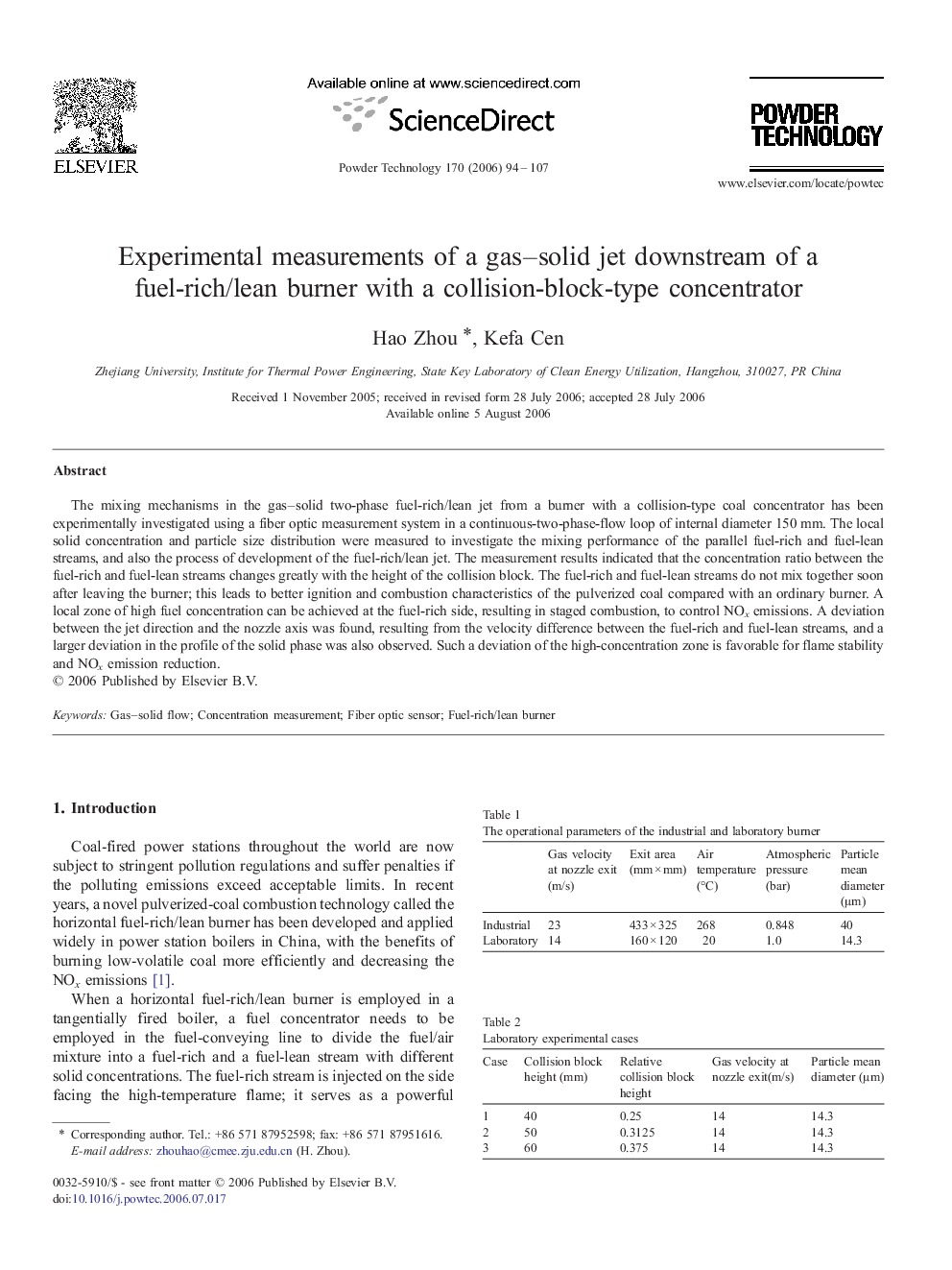| Article ID | Journal | Published Year | Pages | File Type |
|---|---|---|---|---|
| 239264 | Powder Technology | 2006 | 14 Pages |
The mixing mechanisms in the gas–solid two-phase fuel-rich/lean jet from a burner with a collision-type coal concentrator has been experimentally investigated using a fiber optic measurement system in a continuous-two-phase-flow loop of internal diameter 150 mm. The local solid concentration and particle size distribution were measured to investigate the mixing performance of the parallel fuel-rich and fuel-lean streams, and also the process of development of the fuel-rich/lean jet. The measurement results indicated that the concentration ratio between the fuel-rich and fuel-lean streams changes greatly with the height of the collision block. The fuel-rich and fuel-lean streams do not mix together soon after leaving the burner; this leads to better ignition and combustion characteristics of the pulverized coal compared with an ordinary burner. A local zone of high fuel concentration can be achieved at the fuel-rich side, resulting in staged combustion, to control NOx emissions. A deviation between the jet direction and the nozzle axis was found, resulting from the velocity difference between the fuel-rich and fuel-lean streams, and a larger deviation in the profile of the solid phase was also observed. Such a deviation of the high-concentration zone is favorable for flame stability and NOx emission reduction.
Graphical AbstractThe mixing machanisms in the gassolid two-phase fuel-rich/lean jet from a burner with a collision-type coal concentrator have been experimentally investigated using a fiber optic measurement system. The concentration ratio changes greatly with the height of the collision block. The fuel-rich and lean streams do not mix together soon after leaving the burner.Figure optionsDownload full-size imageDownload as PowerPoint slide
